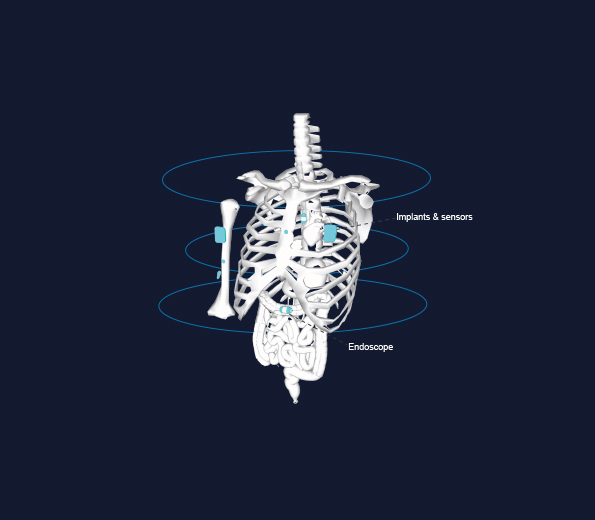
The team, from the university’s Department of Electrical and Electronic Engineering, has demonstrated a highly efficient method for wirelessly transferring power to a drone while it is flying based on inductive coupling, a concept initially demonstrated by inventor Nikola Tesla over 100 years ago.
To demonstrate their approach the researchers bought an off-the-shelf quadcopter drone, around 12cm in diameter, and altered its electronics and removed its battery. They made a copper foil ring, which is a receiving antennae that encircles the drone's casing. On the ground, a transmitter device made out of a circuit board is connected to electronics and a power source, creating a magnetic field.
The drone's electronics are tuned or calibrated at the frequency of the magnetic field. When it flies into the magnetic field an alternating current (AC) voltage is induced in the receiving antenna and the drone's electronics convert it efficiently into a direct current (DC) voltage to power it.
The breakthrough could in theory allow flying drones to stay airborne indefinitely - simply hovering over a ground support vehicle to recharge - opening up new potential industrial applications.
With the drone currently only able to fly 10cm above the magnetic field transmission source the technology is still at an experimental stage.
The team estimates that it’s about a year away from developing a commercially available product that could have applications across a range of sectors.
Dr Samer Aldhaher, a researcher from the Department of Electrical and Electronic Engineering at Imperial College London, said: "There are a number of scenarios where wirelessly transferring power could improve drone technology. One option could see a ground support vehicle being used as a mobile charging station, where drones could hover over it and recharge, never having to leave the air."
Wirelessly transferring power could have also applications in other areas such as sensors, healthcare devices and further afield, on interplanetary missions.
Prof Paul Mitcheson, from the Department of Electrical and Electronic Engineering at Imperial College London, said: "Imagine using a drone to wirelessly transmit power to sensors on things such as bridges to monitor their structural integrity. This would cut out humans having to reach these difficult to access places to re-charge them.

"Another application could include implantable miniature diagnostic medical devices, wirelessly powered from a source external to the body. This could enable new types of medical implants to be safely recharged, and reduce the battery size to make these implants less invasive.
"In the future, we may also be able to use drones to re-charge science equipment on Mars, increasing the lifetime of these billion dollar missions.




Poll: Should the UK’s railways be renationalised?
I _do_ remember British Rail - and that it was <i>literally</i> a national joke https://youtu.be/zV2lmSDKvO8